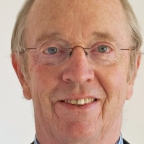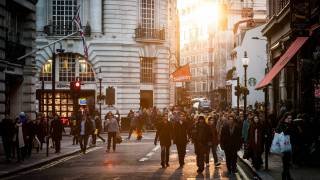How Fast Does Sunlight Kill Coronavirus?

It has been demonstrated previously that UVC light, which is not present in natural sunlight, can inactivate coronaviruses, which is good news.
However, a new study published by Oxford University Press for the Infectious Diseases Society of America on May 20, 2020, is the first to demonstrate that UVB levels representative of natural sunlight rapidly inactivates the SARS-CoV-2 coronavirus on surfaces, specifically virus dried on stainless steel.
The results also show that the inactivation rate is dependent on both the intensity of simulated sunlight and the matrix in which the coronavirus is suspended.
Under levels of simulated sunlight representative of midday on the summer solstice at 40oN latitude, 90% of the infectious virus is inactivated every 6.8 minutes in simulated saliva dried on a surface.
For simulated sunlight representative of the winter solstice at 40oN latitude, 90% of the infectious virus is inactivated every 14.3 minutes in simulated saliva dried on a surface.
These findings suggest that the potential for fomite transmission may be significantly reduced in outdoor environments exposed to direct sunlight relative to indoor environments.
Additionally, these data provide evidence that natural sunlight may be effective as a disinfectant for contaminated non-porous materials.
However, while significant levels of viral inactivation were observed within minutes at all simulated sunlight levels investigated, it should be noted that the duration of time each day that outdoor UVB levels exceed those used in the present study is dependent not only on the time of year but also on the local weather conditions.
Thus, it is possible that significant day-to-day variability may exist in the persistence of SARS-CoV-2 on surfaces in outdoor environments.
In contrast to simulated sunlight, no significant decay was observed in darkness over the 60-minute test duration, which is consistent with previously published data with both SARS-CoV-2 and SARS-CoV-1.
One variable among the present study and previous studies was the size of the droplet used to contaminate the surface.
In the present study, 5 µL droplets were used, whereas previous studies used droplet sizes ranging from 5 µL up to 500 µL.
It is known that a range of droplet sizes are present in respiratory expulsion events, and, therefore, a range of droplet sizes are relevant to studies examining the persistence of virus-laden droplets on surfaces.
However, there is evidence that the size of a droplet may affect the subsequent survival of viruses contained within the droplet following deposition on a surface, potentially complicating comparisons of the results between studies in which different droplet sizes were used.
Therefore, additional studies examining the relationship between droplet size and surface persistence are needed to better understand the impact of this parameter on the hazard posed by surface contamination.
The results of the present study also demonstrate that the inactivation rate of SARS-CoV-2 in simulated sunlight was approximately 2-fold greater in simulated saliva than in culture media.
However, no significant decay was observed in darkness for either suspension medium over the duration of the test.
While no effect of suspension medium was observed in darkness in the present study, a previous study found that the addition of 10% fetal calf serum to culture media enhanced the surface persistence of SARS-CoV-1 in dried droplets under indoor conditions.
Given the slow decay rates previously reported under indoor conditions, it is possible that the duration of the tests in the present study was not sufficient to discern any small differences in the inactivation rate due to suspension medium that may exist in darkness.
Finally, while the simulated sunlight spectra utilized in the present study were meant to be representative of natural sunlight at different times of the year, a low level of irradiance was present below the UVB portion of the spectrum, between 250-280 nm, that is not present outdoors.
The integrated irradiance in this range was approximately 3x10-3 W/m2, which is 100-500 times lower than the integrated UVB irradiances utilized in the present study.
A previous study demonstrated that 254-nm UVC light rapidly inactivated SARS-CoV-1.
However, this study only looked at a single irradiance level and the associated doses were more than 1,000-fold greater than those in the 250-280 nm region in the present study, making it difficult to determine if the low level of irradiance in the present study contributed to the measured inactivation rates.
In summary, the present study provides the first evidence that sunlight may rapidly inactivate SARS-CoV-2 on surfaces, suggesting that surface persistence, and subsequently exposure risk, may vary significantly between indoor and outdoor environments.
However, in order to fully assess the risk of exposure in outdoor environments, information on the viral load present on surfaces, the transfer efficiency of coronavirus from those surfaces upon contact, and the amount of virus needed to cause infection are also needed.
SARS-CoV-2 pandemic news published by Coronavairus Today.


.jpg)

.jpg)



.jpg)

.jpg)








.jpg)


.jpg)


